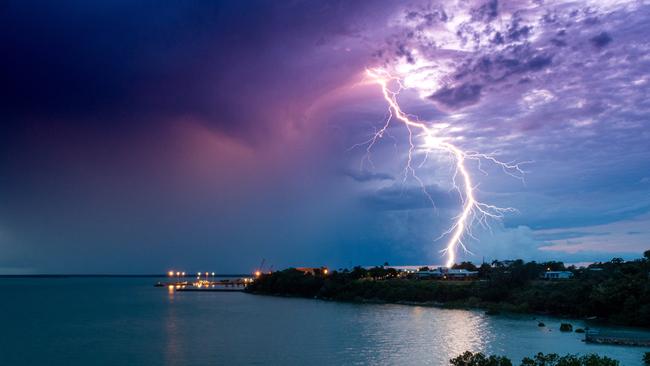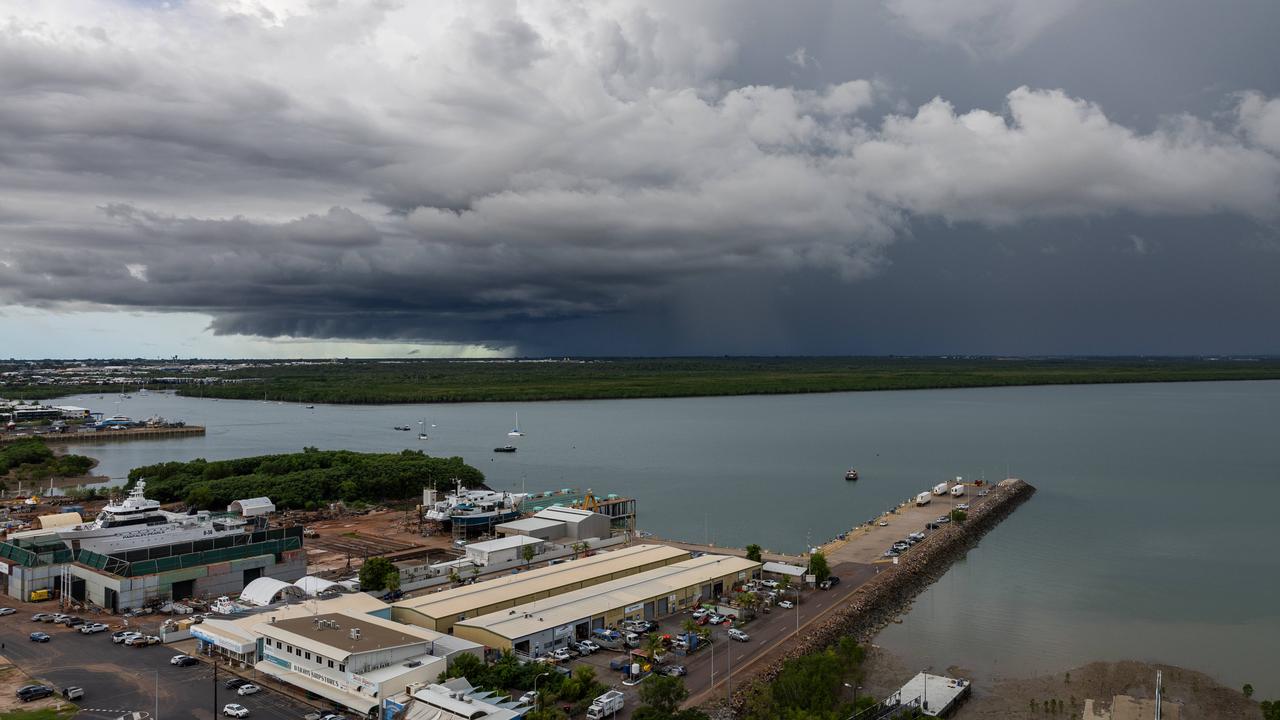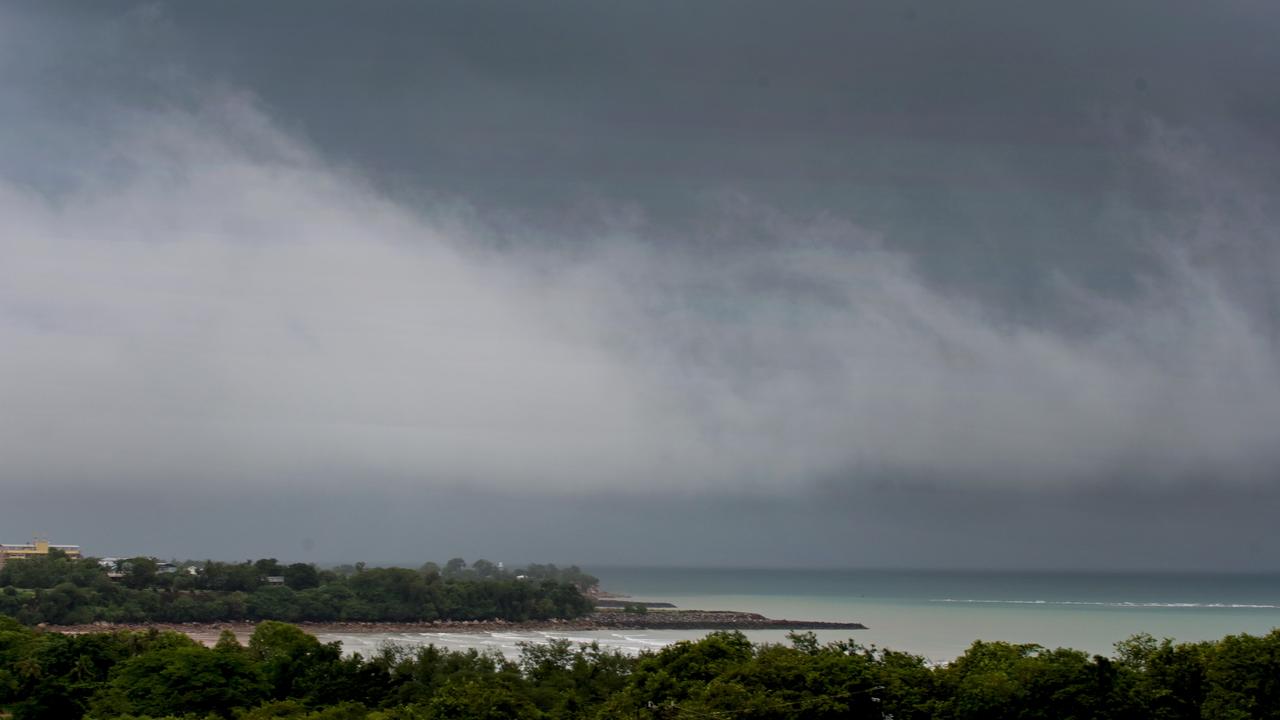What to do in a Northern Territory lightning storm
Even without a direct hit, lightning can travel though the ground to your building, find its way to your electrical appliances and cause widespread damage.
Weather
Don't miss out on the headlines from Weather. Followed categories will be added to My News.
The Territory’s electrical storms are a spectacular sight, but when it comes to the dangers of lightning, the maths is pretty clear.
Seven milliamps of electricity directly to the heart can cause death in just three seconds. A lightning bolt can carry between 10,000 and 30,000 amps. That’s a staggering amount when you consider an average single-phase motor found in household appliances draws only 10 amps.
This means lightning in the distance is a warning you don’t want to ignore, otherwise you could end up as one of the 10 Australians killed by lightning each year or the 100 who are injured.
Even without a direct hit, lightning can travel though the ground to your building, find its way to your electrical appliances and cause widespread damage. About 80 per cent of injuries happen to people using hardwired telephones when lightning strikes a phone wire.
Injuries can include electric shock, hearing damage or burns.
While surge protectors will save your equipment from minor power surges, they will not protect it from a direct or close lightning strike, as electrical cabling, water and telephone lines act as conductors.
For this reason you should unplug all appliances and not use telephones.
Unplugging your television, computer and other significant electrical items, such as pumps, is the only certain way to protect them against high-voltage electrical surges.
Lightning strikes can send tens of thousands of volts through a phone line, so it’s safest to restrict landline phone calls to emergencies only, or use a mobile phone.
You should seek advice from a professional in regard to surge protection.
What to do if you’re caught outdoors
The distance in kilometres to a lightning flash can be estimated
by taking the time delay
(in seconds) between the flash
and the thunder, then dividing it by three.
If you hear thunder 10 seconds after a lightning flash, it is only about 3km away. The shorter the time, the closer the lightning, so find shelter urgently.
Seek shelter in a hardtop (metal-bodied) vehicle or solid building, but avoid small open structures or fabric tents. Never shelter under sparse or single trees.
If far from shelter, crouch alone with your feet together, preferably in a hollow. Remove metal objects from your head and body.

Avoid being the highest object around, but don’t lie down flat.
If your hair stands on end or you hear buzzing from nearby rocks, fences or other objects, move immediately.
At night, a blue glow may show if an object is about to be struck.
Don’t fly kites or model aeroplanes with control wires. Don’t handle fishing rods, umbrellas or golf clubs.
Stay away from metal poles, fences and clothes lines. Don’t ride horses or bicycles, or travel in open vehicles.
If you are driving, slow down or park away from trees, power lines or other tall structures. Stay inside metal-bodied vehicles or caravans, but don’t touch metal sections.
If swimming or surfing, leave the water immediately. If boating, go ashore to shelter as soon as possible. Ensure the mast and stays of a sailing boat are adequately grounded to the water.
What to do if you’re indoors
Disconnect external aerial and power leads to radios and television sets before the storm arrives.
Disconnect computer modems and power leads.
Draw all curtains and keep clear of windows, electrical appliances, pipes and other metal fixtures.
Avoid touching brick or concrete, or standing barefooted on concrete or tiled floors. Don’t use the bath, shower, basin or sinks.
Avoid using fixed telephone lines. In emergencies, any calls you need to make should be brief.




